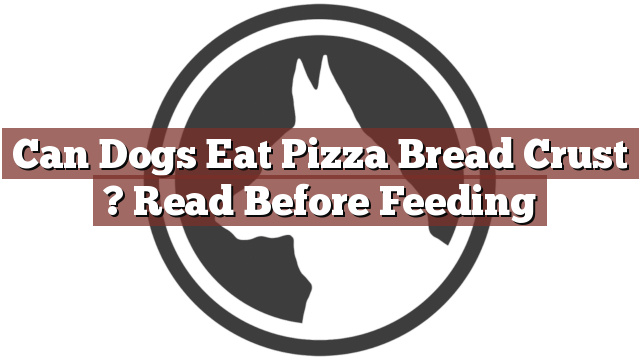Understanding Your Dog’s Dietary Needs
As responsible pet owners, it is essential to understand our furry friends’ dietary needs to ensure their health and well-being. Dogs require a balanced diet that consists of protein, carbohydrates, fats, vitamins, and minerals. While it is tempting to share our human food with our dogs, it is important to remember that not all foods are safe for them. Some foods can be toxic and harmful to dogs, leading to digestive issues or even serious health complications. Therefore, it is crucial to be cautious when introducing new foods into their diet.
Can Dogs Eat Pizza Bread Crust? Read Before Feeding
Can dogs eat pizza bread crust? This is a question that many dog owners may have in mind when they sit down for a pizza night. While dogs can consume certain types of bread in moderation, it’s important to evaluate the specific ingredients and potential risks associated with feeding them pizza bread crust.
Pizza bread crust contains ingredients such as flour, yeast, salt, and oil. While these ingredients are generally safe for dogs, there are a few factors to consider. The crust is often high in salt, which can be harmful to dogs if consumed in large amounts. Additionally, some dogs may have difficulty digesting the crust due to the high carbohydrate content. It is also important to note that certain types of crust may contain seasonings or toppings that can be harmful to dogs, such as onions or garlic.
Pros and Cons of Feeding Pizza Bread Crust to Dogs
Pros: If you’re considering sharing a small piece of pizza bread crust with your furry friend, there are a few potential benefits. The crust can provide dogs with a small amount of carbohydrates, which can be a source of energy. It may also offer some fiber, which can aid in digestion. Additionally, the act of chewing on the crust can help promote dental health by reducing plaque buildup.
Cons: However, it is crucial to be aware of the potential risks associated with feeding pizza bread crust to dogs. As mentioned earlier, the high salt content can lead to dehydration and sodium toxicity, which can be dangerous for dogs. The high carbohydrate content can also contribute to weight gain and obesity if consumed regularly. Furthermore, certain ingredients commonly found in pizza crust, like onions, garlic, or seasonings, can be toxic to dogs and may cause digestive upset or more severe health issues.
Conclusion: Make an Informed Decision for Your Furry Friend
When it comes to feeding your dog pizza bread crust, it is vital to make an informed decision based on your individual dog’s needs and any potential risks. While small amounts of plain bread crust may be safe for most dogs, it is essential to ensure it does not contain any harmful ingredients or excessive salt. If you decide to share a pizza crust with your dog, always offer it in moderation and monitor their reaction for any signs of digestive upset or adverse effects. As always, it is recommended to consult with your veterinarian before introducing any new food into your dog’s diet to ensure their overall well-being. Remember, your dog’s health should always be the top priority, and providing them with a balanced and nutritious diet is the best way to keep them happy and healthy.
Thank you for taking the time to read through our exploration of [page_title]. As every dog lover knows, our furry friends have unique dietary needs and responses, often varying from one canine to another. This is why it's paramount to approach any changes in their diet with caution and knowledge.
Before introducing any new treats or making alterations to your dog's diet based on our insights, it's crucial to consult with a veterinarian about [page_title]. Their expertise ensures that the choices you make are well-suited to your particular pet's health and well-being.
Even seemingly harmless foods can sometimes lead to allergic reactions or digestive issues, which is why monitoring your dog after introducing any new food item is essential.
The content provided here on [page_title] is crafted with care, thorough research, and a genuine love for dogs. Nevertheless, it serves as a general guideline and should not be considered a substitute for professional veterinary advice.
Always prioritize the expert insights of your veterinarian, and remember that the health and happiness of your furry companion come first.
May your journey with your pet continue to be filled with joy, love, and safe culinary adventures. Happy reading, and even happier snacking for your canine friend!

